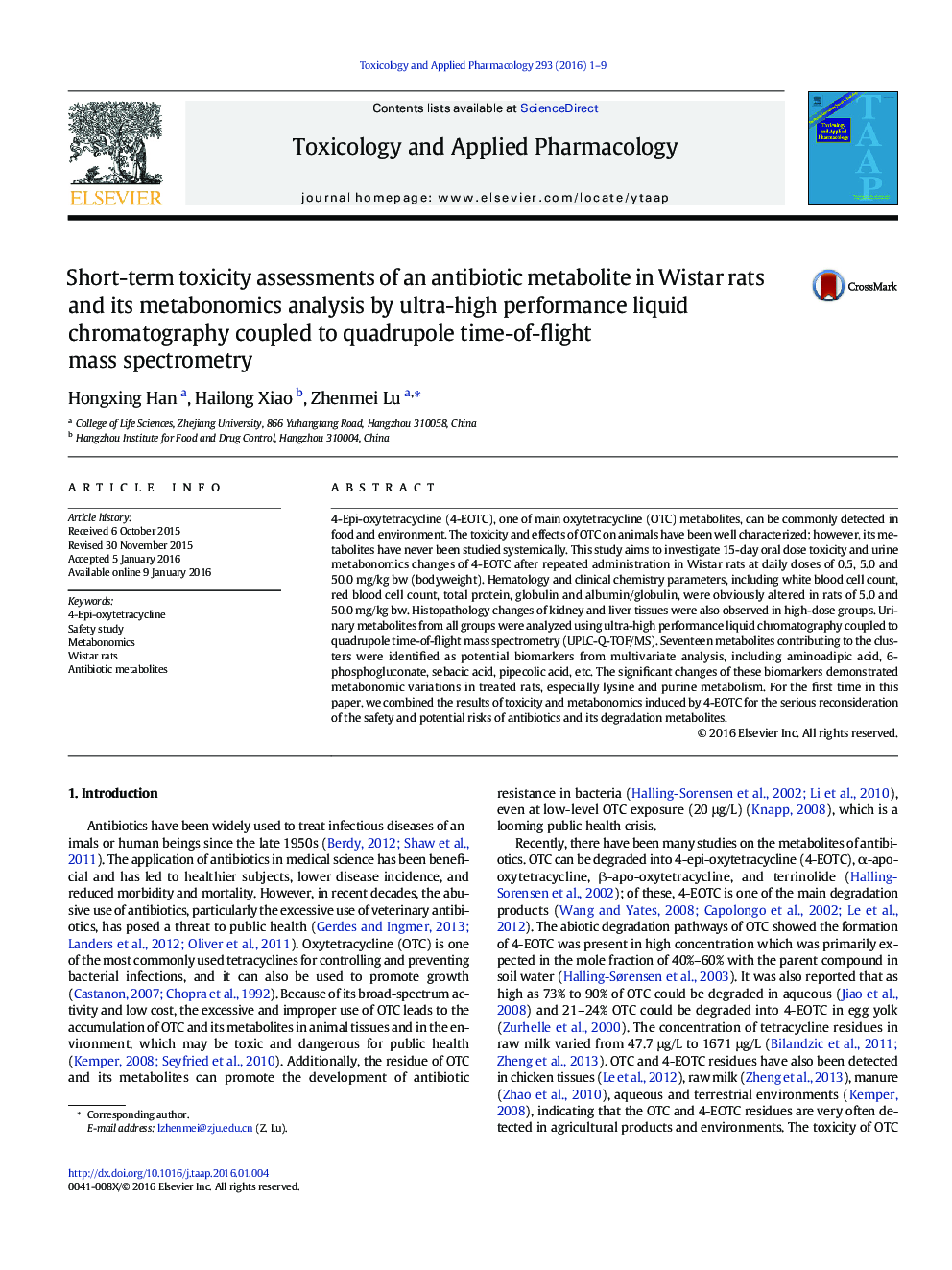| Article ID | Journal | Published Year | Pages | File Type |
|---|---|---|---|---|
| 2568224 | Toxicology and Applied Pharmacology | 2016 | 9 Pages |
•4-Epioxytetracycline (4-EOTC) induced damages in liver and kidney.•Metabonomics changes especially amino acid and purine metabolism were observed.•Security of OTC metabolite 4-EOTC should be taken into serious reconsideration.
4-Epi-oxytetracycline (4-EOTC), one of main oxytetracycline (OTC) metabolites, can be commonly detected in food and environment. The toxicity and effects of OTC on animals have been well characterized; however, its metabolites have never been studied systemically. This study aims to investigate 15-day oral dose toxicity and urine metabonomics changes of 4-EOTC after repeated administration in Wistar rats at daily doses of 0.5, 5.0 and 50.0 mg/kg bw (bodyweight). Hematology and clinical chemistry parameters, including white blood cell count, red blood cell count, total protein, globulin and albumin/globulin, were obviously altered in rats of 5.0 and 50.0 mg/kg bw. Histopathology changes of kidney and liver tissues were also observed in high-dose groups. Urinary metabolites from all groups were analyzed using ultra-high performance liquid chromatography coupled to quadrupole time-of-flight mass spectrometry (UPLC-Q-TOF/MS). Seventeen metabolites contributing to the clusters were identified as potential biomarkers from multivariate analysis, including aminoadipic acid, 6-phosphogluconate, sebacic acid, pipecolic acid, etc. The significant changes of these biomarkers demonstrated metabonomic variations in treated rats, especially lysine and purine metabolism. For the first time in this paper, we combined the results of toxicity and metabonomics induced by 4-EOTC for the serious reconsideration of the safety and potential risks of antibiotics and its degradation metabolites.
Graphical abstractFigure optionsDownload full-size imageDownload high-quality image (469 K)Download as PowerPoint slide
